Savour the flavour: Why Japanese diets and the taste of umami are so good for your health 🍚
Traditional Japanese diets are one of the healthiest in the world. But what exactly are they eating that makes it so good?
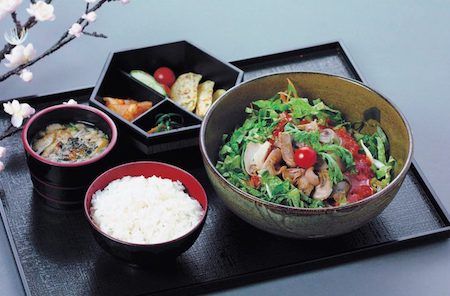
Image source
Washoku is the name given to traditional Japanese diets and cuisines which are comprised of mostly fish, soy products, vegetables, dashi and very few animal products.
Dashi a stock used as the basis for most Japanese broths and soups. The flavour of dashi typically comes from dried mushrooms, seaweed or fish.
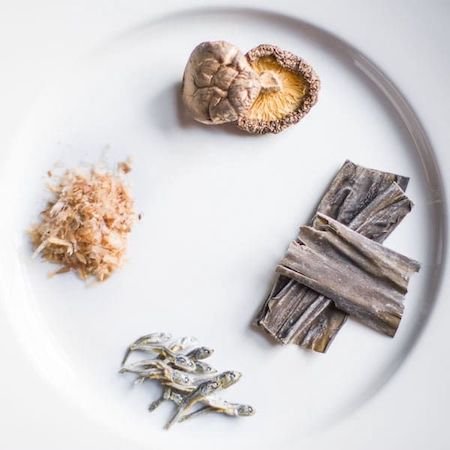
Image source
Traditional Japanese meals are very structured with each element (and even where it’s placed) serving a purpose.
The meal itself is comprised of cooked rice and miso soup (placed directly in front of an individual with a pair of chopsticks) along with a number of side dishes of fish or vegetables (called okazu - which are placed behind or to the side of the rice and miso soup).
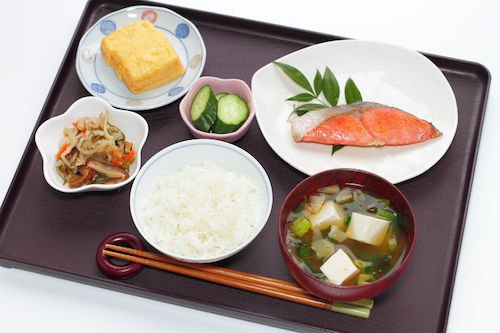
Image source
Miso soup is made from dashi, miso (fermented soybean paste) and other ingredients like mushrooms, vegetables and seaweed to help boost the flavours even further.
Having a soup as the foundation for a lot of dishes may not sound too appealing or tasty to people unaccustomed to Japanese cuisine, especially when it can contain loads of fresh vegetables.
This is why the taste sensation called umami is so integral to the Japanese foods and dishes - it makes otherwise boring or bland foods more pleasant and palatable.
The term umami roughly translates to “pleasant” or “delicious” and is described as a savoury, brothy, meaty or more-ish taste.
Mmmm umami!
The umami taste we perceive occurs when an amino acid called glutamate is detected by specific taste receptors in our mouths. Glutamate is found naturally in fish, cured meats, mushrooms, some vegetables like tomatoes and fermented cheeses - but it is also commonly added to Japanese meals as a flavour enhancer in the form of MSG.

Glutamate
Image source
It is common knowledge that when we eat seemingly bland foods like steamed vegetables, for example, that if we add some sugar or fat that it becomes dramatically more palatable and tasty. This is a simple way of introducing and encouraging people to eat more nutrient-dense foods that may often be neglected. Glutamate (and therefore MSG) act in a very similar way to enhance how something tastes, however, the scientific cause for is only partially understood.
Dow does umami work exactly?
Studies have found that when glutamate is present in a food or meal that it acts to balance out other flavours. In our mouths, we have lots of different taste receptors designed to detect foods that are bitter, fatty, sweet, salty, sour and of course umami.
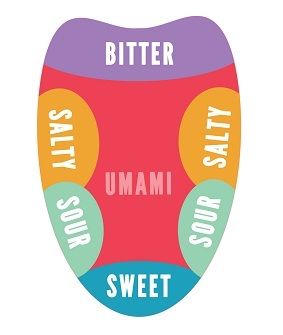
Image source
Naturally, studies have looked at how these different tastes interact with each other and the results are interesting. They found that when there is enough glutamate present that it may make things seem saltier or sweeter than they actually are and may have a role in reducing how sour or bitter something is.
What makes Washoku so healthy?
Firstly, excessive salt intake is fairly common in typical Western diets and is associated with hypertension (high blood pressure), so the idea of having a meal with much less salt whilst still being able to enjoy the salty taste - due to the presence of glutamate - could help to control blood pressure and reduce sodium intake.
In addition, some of the healthiest vegetables (and least consumed) can seem bitter or bland to some people. Therefore having some of that umami flavour mixed in could increase the palatability for individuals that eat few vegetables. On top of that, consumption of animal products is also reduced when eating a diet similar to Washoku.
Aside from the food choices on offer, how they are consumed is also of interest. Using chopsticks, for example, allows individuals to eat smaller portions of food with each mouthful - this means that a meal is eaten slowly over a longer period of time which can help to increase satiety (fullness) and improve digestion.
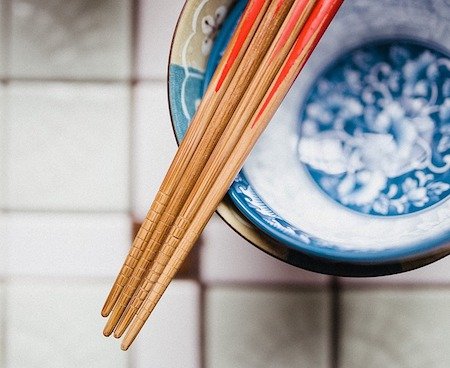
Read the original journal article here
- Gabriel, AS, Ninomiya, K & Uneyama H (2018),'The Role of the Japanese Traditional Diet in Healthy and Sustainable Dietary Patterns around the World', Nutrients, vol.10, no.2, p173
Images are my own, sourced from Pixabay or linked
My Latest Posts
I lost 35% of my crypto investments in the FIRST MONTH!! 😱
My Top 5 iPhone Apps To Crush Your Steemit Game!
Student stress and weight gain
Can Diets Tailored To Our Genetics Help With Weight Loss?
#JustOne Orange Provides You With…
Printable Diets: How Soon Will We Have 3D Foods?
My Latest Recipes
Smoky Miso Tempeh Marinade | Vegan
10 Tasty Vegan Meals | Instagram Deep Dive
Toasted Avocado and Enoki Mushroom Sandwich | My Favourite Vegan Lunch
CONNECT WITH ME ON

Being A SteemStem Member
The highest life expectancy is in Japan as far as I know so they might know better what's healthy.
Absolutely! Such a great way to eat
thnx for the info @thedrewtrott
Glad you enjoyed it
Sneaky Ninja Attack! You have been defended with a 2.30% vote... I was summoned by @thedrewtrott! I have done their bidding and now I will vanish...Whoosh
This post has received a 1.75 % upvote from @boomerang thanks to: @thedrewtrott